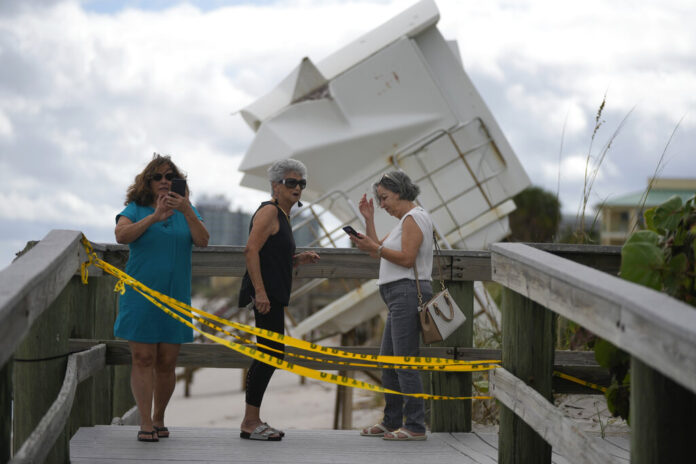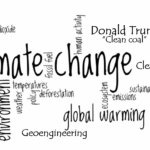Florida voters returned Governor Ron DeSantis to the state capitol in voting last week by a 20% victory margin. Last year, the Governor unveiled two plans to address rising seas and atmospheric temperatures. One was called Always Ready Florida, a US $270 million program involving 76 adaptation projects. The second program allocated $650 million to improve the infrastructure of inland waterways, and coastlines, and to save coral reefs. The two plans made no mention of climate change mitigation. At the time the Governor stated, “What I’ve found is when people start talking about things like global warming, they typically use that as a pretext to do a bunch of left-wing things that they would want to do anyways. And so we’re not doing any left-wing stuff.”
An October 2022 poll taken just before the mid-term election showed that 67% of Republicans believed climate change was “not an emergency” while 78% of Democrats and 45% of independents said it was.
Hardening Florida’s infrastructure is very much needed in light of the two hurricanes that recently made direct hits on the state. Hurricanes are not climate change. But they are extreme weather events that can be influenced by environmental changes such as warmer than normal Atlantic Ocean surface water temperatures that feed these storms.
Hurricane Ian made landfall on Florida’s west coast on September 28 while Nicole made landfall on the east side of the state in the evening and early morning of November 9 and 10. Ian was the more powerful of the two and caused extensive wind and flood damage. But Nicole in the last week made pretty big headlines. Why? Because NASA was caught in the cross-hairs of the storm, and because Nicole didn’t just wipe out beaches. It toppled homes into the Atlantic Ocean.
NASA was concerned about damage to the Space Launch System (SLS) and Orion spacecraft for the upcoming Artemis 1 circumlunar mission. Cape Canaveral was directly in the path of the hurricane and the Agency couldn’t move the rocket back to its assembly building because of the potential damage resulting from the journey. So they left it in place on the launch pad where hurricane-force winds attained speeds of 160 kilometres (100 miles) per hour based on sensor readings at the site. The SLS is rated to handle winds approaching Category 1 hurricane strength which Nicole was. Fortunately, the rocket survived with only slight damage.
But a number of multimillion-dollar Florida beach homes weren’t so lucky. The image at the top of this article shows one such home tilted on its side while a number of others toppled into the ocean near Vero Beach. High-rise condominiums along that part of the coast were equally threatened as seawalls crumbled from the storm surge. Ian destroyed seawalls and washed away beaches in September. Nicole did one better, taking out homes even though the storm was weaker.
The post-storm private insurance company adjusters were out shortly after both hurricanes to assess the damage which is expected to reach tens of billions of dollars. Insured losses could be a tipping point for private property-insurance providers who have been selling policies to Floridians as the population of the state has boomed and real estate has gone through the roof over the past two decades.
Where Cognitive Dissonance Comes Into Play
Hurricanes aren’t stopping Americans and Canadian snowbirds from moving to Florida. I recently wrote a piece on this site that asked if Americans were like legendary lemmings. Florida is a case in point. Between 2010 and 2020 its population has grown 15% to surpass New York making it the second most populous state. In the last two years because of demand from this growing migration housing prices have risen 30% on average across the state. You can bet that beachfront prices have increased well above that average.
How many homes in Florida will be at risk in the future to extreme weather events like these two hurricanes, and to the ongoing onslaught from rising sea levels and global warming?
Today, annual insurance premiums for Florida homes are three times higher than the national average. Six private insurers have become insolvent in the last year. Reinsurers, who underwrite insurance companies have been predicting this future for some time.
Now Florida’s state insurer, Citizens Property Insurance, is serving as the insurer of last resort. Its coverage losses are picked up by the state. But for how much longer will Florida, and its Governor who now sees the White House in his future, continue down the path of ignoring climate change and not wanting to do “left-wing stuff?” And when premiums reach astronomical heights, how many Floridians will find themselves holding on to property that could be swept away by the next Atlantic storm?










[…] in pursuit of a 21st-century tech-heavy lifestyle. Meanwhile more people in the United States are moving to Florida and its sunshine coasts where all the warning signs point to a coming disaster, sooner than […]